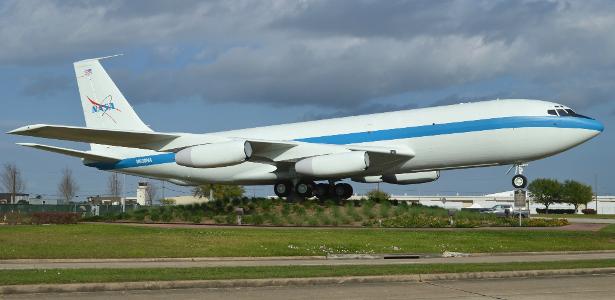
Feeling sick on an airplane is not one of the best feelings you can have on a flight. It is so common that airlines even provide the famous vomit bags to their customers.
It’s a side effect, meaning it’s not what you want to happen on a flight. However, an aircraft of the US space agency NASA is famous for causing nausea in its passengers due to its mode of flight.
Nicknamed the “vomit comet”, this aircraft was used to simulate zero gravity environments, such as those in space. For decades it served as a form of training astronauts for the US space programs.
Proceeding
The reverse plane is not specifically a single aircraft, but a group of aircraft that were intended to simulate zero gravity or microgravity. This required flying in a parabolus, raising the aircraft at an angle of 45° and then diving through the nose (front end) also to tilt 45° to the ground.
During ascent, the force of gravity can be twice the force felt at the surface of the Earth. When you get to the top of the parabola, it feels like zero gravity, and it is possible to “swim” inside these planes.
Each of these flight cycles lasts approximately 65 seconds, but zero gravity only lasts 25 seconds, requiring a restart of operation. In a single flight, dozens of illustrations are made as part of space mission training.
In the movies “Comet Vomit”
NASA aircraft have also been used in film recordings. The feature film “Apollo 13 – From Disaster to Triumph” (Universal Pictures, 1995) starring Tom Hanks, Kevin Bacon and Bill Paxton was shot on “Vomiting Comet”.
To record the scenes, NASA collaborated by lending aircraft for production. Hundreds of shots were made, as the period of zero gravity was too short.
model
While NASA has used other aircraft such as the C-9 and C-131, the most famous “vomit comet” was Boeing’s KC-135 Stratotanker. The model came into use in the 1960s, and was retired in the 2000s.
Originally designed for aerial refueling, it is also capable of aeromedical operations. In total, five Stratotanker samples have been adapted for zero-gravity simulation flights.
It is a four-engined vehicle with a weight of up to 140 tonnes and an altitude of 15 km. This customized model of the KC-135 can also fly a distance of up to 4,800 km and can reach a speed of 940 km/h.
Today two of these specimens are on display at the Pima Air and Space Museum and the other at Ellington Field Air Base in Houston (USA). Currently, NASA uses the service of private companies to provide training and experience with zero gravity.








